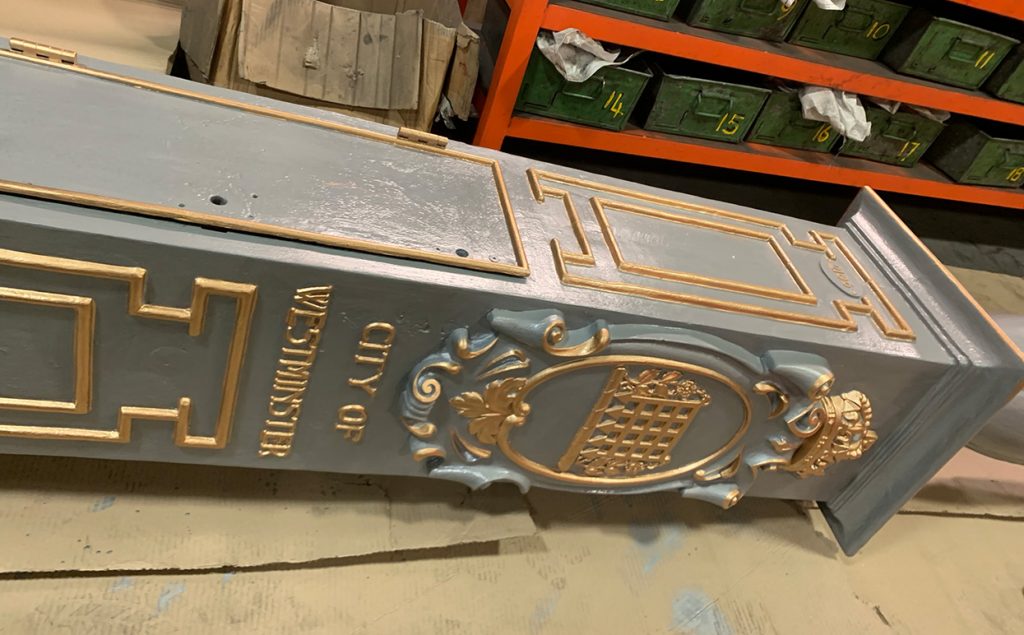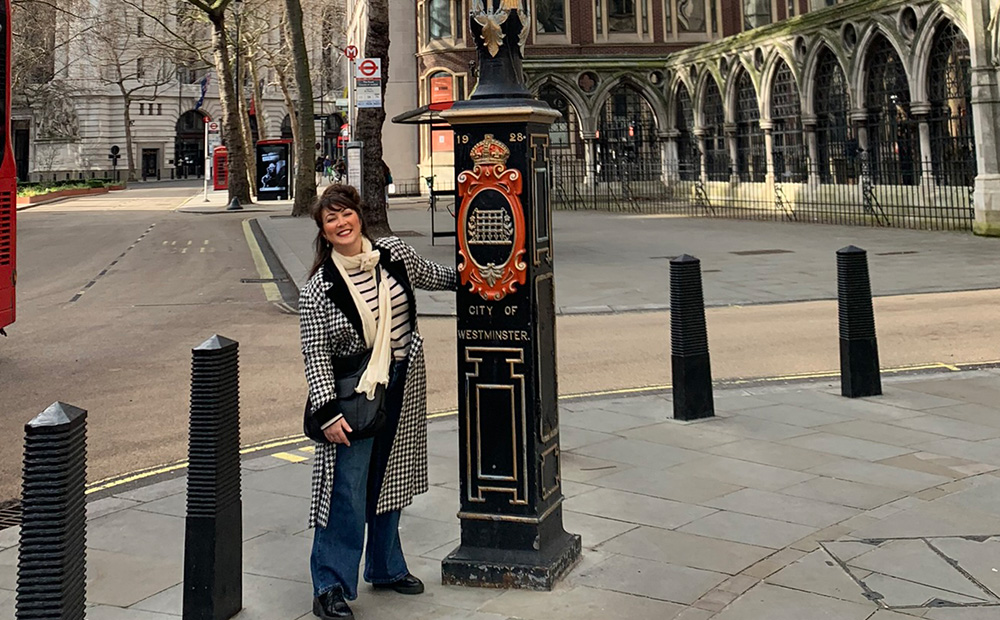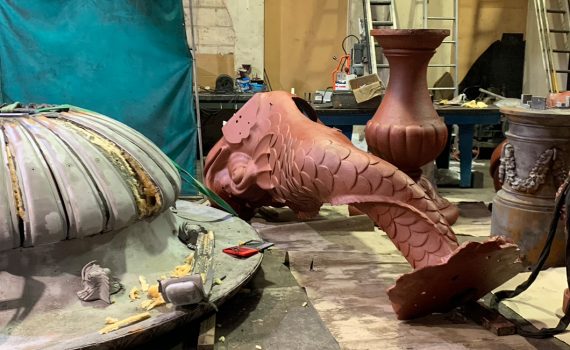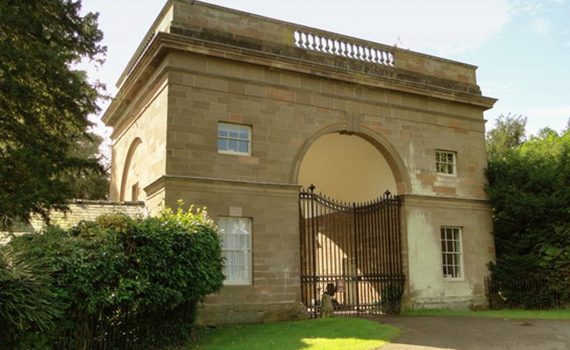Excited by the challenge, we jumped on board for this extensive cast iron heritage restoration project. Being a third-generation family business founded in 1946, we have perfected the art of sympathetic and environmentally conscious remanufacturing and restoration using a unique process called Gas Fusion Welding, as a team our wealth of experience and expertise enable us to use our collective skills for not only industrial projects, which was once our focus, but also, Restoration and Heritage projects which we have been increasingly drawn towards due to the fact of being so passionate about repairing rather than replacing. This is a testament to the changing attitude towards protecting the environment and we are advocates for this positive change.
Historically Cast Iron has proven to be a resilient material and we want to celebrate this fact. All around us there is evidence of its longevity, with structures dating back well over 100 years. With care, Cast Iron lends itself to an extended service life, far exceeding the expected lifetime of modern alternatives.
Restoring Heritage Lamp Columns
In order to create a proposed plan for the restoration, we were informed of some of the issues these large Lamp Columns face being located on the streets of the Capital City, such as
The instability of the tall structure when the joints become loose through corrosion occurring over time
- Vandalism from the public in the form of graffiti
- Traffic collisions causing damage to the structure on impact
- General erosion to the structure and deterioration of the protective paint layers caused by years of harsh weather conditions
These are the usual problems for the Cast Iron Columns to endure. Because of the location of these large columns, accessibility can also be a challenge. The team informed and discussed with the client the realities a project of this scale brings and highlighted challenges that may occur such as the fact that, to begin with, the Lamp Column would have to be removed entirely from its location in London and transported to our workshop in Leicestershire in order to do a complete restoration. A challenge worth the upheaval and one that our capable CIWS team are totally prepared for in order to get the best outcome.
When the Lamp Columns arrived at our CIWS workshop, they were usually layered in copious amounts of leaded paint which needs to be removed in a compliant manner and disposed of safely and correctly. Only then could a detailed inspection and specialised testing be carried out, firstly to discover every fault possible and repair any damage found and secondly to find and correct any evident instability at the Lamp Columns joints, an important part of the inspection process as it will ensure the long-term safety of the public which was the main objective for the client.
Safely Removing and Inspecting Heritage Lamp Columns
Once the client and all relevant parties were informed of the proposed plan (sometimes depending on location and accessibility road closures need to be arranged in advance or temporary alternative access routes made for wide vehicles and equipment etc) the team could then proceed. We made our way to the location to begin the safe removal of the affected Lamp Column from the street location using specialist equipment to lift and stabilise the asset out of the ground and onto the transportation vehicle.
Once the column arrived back to our workshop in Leicestershire, we carried out a detailed inspection. The smooth running of a project is reliant upon good communication skills and teamwork which CIWS have, it’s an important factor when dealing with heavy assets and essential for a safe working environment.
Ensuring Structural Integrity: Testing and Restoring Lamp Columns with Precision
The Lamp Column needed to be shot blasted before any testing or welding repairs could take place. Shot blasting safely removes historic leaded or toxic paint from the surface without causing further damage. The structure of the Lamp Column could then be tested using Magnetic Particle Testing (MPI). This technique involves using white background paint and black magnetic ink. A powerful yoke is applied that draws the magnetic ink into any cracks or defects, also showing up any previous repairs and flaws dating back to the original casting at the foundry. The areas of concern are then marked, and repairs can take place further down the line. Secondary testing is required to ensure the structure is sound. This time, dye penetrant testing is used. A cleaning fluid, a dye and a developer highlight anything that remains a concern after the repair process. MPI and Dye-pen testing are described as liquid penetrant inspection practices controlled to an international standard (BS EN 1371) ensuring tests are carried out to a fixed and effective procedure. The inspectors within the CIWS team are subject to annual refresher courses to retain their certification.
Large Lamp Columns were often originally constructed in sections with a spigot joint at the interface which can be separated. Unfortunately, during the inspection process, it became apparent that this joint had corroded and with time had become unstable preventing the Lamp Column from standing straight and true. When the columns were originally designed, cast in the foundry and then erected on location. ‘Male’ and ‘Female’ joints would have been tightly connected to ensure a tight, stable fitting. To correct any instability the team applied our unique Fusion Welding process to the cause, (usually used for repairing cracks and corrosion) in this case it was used to reconstitute the joints. The team resolved the issue of instability by boring out the ‘Female’ joint to an agreed fixed diameter, the ‘Male’ part of the joint was built up with Cast Iron and then machined back to a suitable tolerance. When the Column was re-installed, any lateral movement would no longer be possible with the new snug fit of both parts of the column.

Precision Welding and Exquisite Detailing
Restorative work on the surface of the Lamp Column began, and although ‘Shot Blasting’ is a gentle solution for the removal of paint from heritage items such as the Cast Iron Lamp Column, unstable decorative details can become loose by removing the old paint in the process. Our skilled team assessed the newly exposed surface with a keen eye and any pieces lost were built back up with weld and re-contoured perfectly to its original design.
Once the Lamp Column was stabilised. Any damaged areas were welded and repaired using what we call a “Foundry” process. Which involved pre-heating the entire component, creating a molten pool of Cast Iron, and then introducing new Cast Iron of precisely the same grade ensuring a seamless and high-quality repair. After the intensive heating process, tightly controlled cooling of the asset took place to stress relieve. (This process and the required flux were ingeniously discovered back in the early 1940’s) This unique technique was handed down through the family generations at CIWS and makes it particularly special for our team to still use today. Cast Iron is often described in the industry as a ‘tricky’ material to work with, but we have mastered the art of it.
The detailed imagery featured on these Lamp Columns is a prominent part of their design. Our in-house Creative Artist was enlisted to apply the new decorative and protective paint. It’s a lengthy but satisfying process. Specifically designed paints are used to give a protective layer against harsh weather conditions and as mentioned earlier protection to resist the occasional graffiti attack. The paint that was specified for this project took a minimum of sixteen hours to dry in between coats. It was especially important to follow the manufacturers’ guidelines to ensure the correct hardening of each layer.
A steady hand was needed to create a neat finish that the client would expect. The Westminster Lamp Columns feature highly decorative vertical ‘Art Nouveau’ style Poppies and Foliage to the middle and upper part of the column. The lower portion which is an oblong-shaped base, has a raised cameo shape and a Regal Crown surrounding a coat of arms which appear on the two opposite sides of the base. They have a specific design relating to the particular borough of London in which they reside.
On this Lamp Column, the design depicted A Gate flanked by two Floral and Foliage stems. The raised details were highlighted in poppy red paint, a gold metallic paint was used to pick out further raised areas for lustrous embellishment. A Graffiti Resistant Paint which had to be accurately mixed with a hardener, in a rich shade of jet black, was applied carefully, maintaining a crisp edge to the decorative details. Even though the consistency of the paint is reminiscent of tar, working quickly and efficiently is beneficial (as the paint is desperate to harden.) Mixing only the required measured amount each time to avoid product wastage.
After each layer had dried fully the Lamp was lifted and rotated 90 degrees to gain access to each face of the oblong column. Each stage was carried out with accuracy and patience. Resisting the temptation to rush the drying process will never be an option, damage would occur to the paintwork caused by the immense pressure the straps of the hoist undergo whilst rotating the heavy column. The calculation of the projects overall time scale (inclusive of paint hardening time) was taken into consideration before any work began or deadlines were created. The rotating process was continually repeated until every part of the Lamp Column had been painted to the required specifications. To ensure longevity to the protective paints already applied, a further layer of clear glaze was applied to the entire Lamp Column for not only a lustrous finish but more importantly extra durability.




